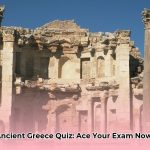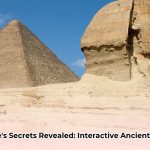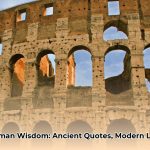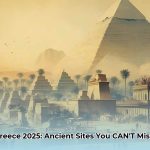Imagine stepping back thousands of years, walking the very ground where Western civilization began. Picture ancient philosophers debating timeless truths, Olympic champions striving for glory, and magnificent temples rising to honor powerful deities. A journey to Greece is not merely a vacation; it is an immersive exploration into a tapestry of complex religious beliefs, foundational governments, and the intricate daily lives of ancient peoples. This guide provides actionable intelligence and expert insights for your 2025 historical trip, ensuring you not only experience these wonders but meaningfully contribute to their enduring legacy. You can discover more about these stunning famous Greek sites.
Our aim is to empower you with strategic planning tools, foster a deeper understanding of ancient Greek heritage, and highlight the critical role of ethical tourism in safeguarding these irreplaceable treasures. From navigating iconic landmarks to supporting vital conservation efforts, prepare to unlock an unparalleled historical adventure.
Discovering Greece’s Timeless Grandeur: Iconic Sites & Profound Heritage
Ancient Greece left an indelible mark on human history, manifested in breathtaking remnants awaiting exploration. These ancient Greek sites offer a profound window into a world of sophisticated thought, diverse governance, and daily existence. More than mere ruins, they stand as powerful testaments to human ingenuity, artistic brilliance, and cultural development.
The Acropolis of Athens, a globally recognized symbol, remains a marvel of ancient architecture and engineering. Dominating the Athenian skyline, it hosts the majestic Parthenon, the elegant Erechtheion, the monumental Propylaea, and the graceful Temple of Athena Nike. Each structure on this sacred rock tells a story of Athens’ Golden Age, a period of unparalleled artistic and intellectual flourishing. The Parthenon, dedicated to the goddess Athena, stands as the zenith of Doric architecture, its harmonious proportions inspiring architects for millennia. Below, the Ancient Agora served as the vibrant heart of civic, social, and commercial life, where Socrates debated and democracy took root.
Further afield, Delphi, once believed to be the “navel of the Earth,” was a monumental hub for religious events and prophecy. Nestled on the slopes of Mount Parnassus, its Sanctuary of Apollo drew pilgrims from across the ancient world seeking wisdom from the revered Pythia. The remnants of the Temple of Apollo, the Stoa of the Athenians, and the ancient theater and stadium evoke the site’s immense spiritual and athletic significance.
Of course, Ancient Olympia, located in the western Peloponnese, is the revered birthplace of the Olympic Games. This sacred precinct, dedicated to Zeus, hosted the Panhellenic festival every four years, unifying Greek city-states through athletic competition. Visitors today can explore the remains of the Temple of Zeus, the Temple of Hera, the ancient stadium, and the gymnasium, feeling the echoes of ancient glory.
Other significant sites dot the landscape, each with its unique narrative. Mycenae, the fortified city of King Agamemnon, speaks of the powerful Bronze Age Mycenaean civilization, with its imposing Lion Gate and Cyclopean walls. The theater at Epidaurus, renowned for its impeccable acoustics, was part of a healing sanctuary dedicated to Asclepius, the god of medicine. On Crete, Knossos stands as the heart of the Minoan civilization, a vast palace complex associated with the legend of the Minotaur’s labyrinth. Even lesser-known gems like Akrotiri on Santorini, a remarkably preserved Minoan city buried by a volcanic eruption, offer unparalleled insights into a sophisticated Bronze Age society, earning it the moniker “Minoan Pompeii.” These diverse destinations tell vivid stories, revealing how ancient Greeks lived, worshipped, innovated, and thrived.
Navigating Your Historical Odyssey: Essential Travel Tips
Transforming your dream trip into a seamless reality requires strategic planning. These practical travel tips are designed to significantly enhance your experience as you explore the myriad historical sites of Greece.
Smart Planning for Informed Travelers
- Book Ahead, Secure Your Access: For highly popular attractions like the Acropolis of Athens, Knossos Palace, or a specific tour of Delphi, securing your tickets online well in advance is paramount. During peak travel seasons, spontaneous visits can lead to long queues or even disappointment. Check official attraction websites or reputable ticketing platforms weeks, even months, before your departure. This proactive step helps avoid frustration and guarantees access to these famous Greek ruins.
- Dress Smart, Explore Comfortably: Prioritize comfort by wearing sturdy, broken-in walking shoes. Many ancient sites feature uneven terrain, gravel paths, steep inclines, and ancient stone steps that can be challenging. Lightweight, breathable clothing, a wide-brimmed hat, sunglasses, and high-SPF sunscreen are essential, especially from spring through autumn. Appropriate footwear will significantly improve your exploration experience and prevent discomfort.
- Consider the Off-Season: Fewer Crowds, Deeper Immersion: Planning your visit between November and March, or during the shoulder seasons (April-May, September-October), can largely help you avoid the peak summer crowds. While some smaller locations might have shorter hours or limited accessibility during the true winter months (November-March), the quieter experience, milder weather, and often lower prices for flights and accommodations frequently outweigh this minor inconvenience. This allows for a more contemplative and authentic encounter with Greece’s past.
Beyond the Beaten Path: Uncovering Hidden Narratives
Why confine your exploration solely to the most famous landmarks? Venturing to lesser-known ancient Greek sites unveils a broader, richer picture of Greek history and culture, offering a sense of discovery often missed in bustling tourist hubs.
- Akrotiri (Santorini): Discover this well-preserved Minoan city, encased in volcanic ash, offering a unique glimpse into Bronze Age life with multi-story buildings and vibrant frescoes.
- Mystras (Peloponnese): Explore this UNESCO World Heritage site, a captivating Byzantine ghost town with churches, palaces, and a fortress clinging to a hillside, offering panoramic views and a distinct historical period.
- Vergina (Aigai, Macedonia): Visit the Royal Tombs of Philip II, father of Alexander the Great, housed in a remarkable underground museum. This site offers unparalleled insights into the Macedonian dynasty that reshaped the ancient world.
- Delos (Cyclades): A short boat ride from Mykonos, this entire island is a UNESCO-listed archaeological site, revered as the birthplace of Apollo and Artemis. Explore its temples, houses, and the iconic Terrace of the Lions.
Engaging with knowledgeable local guides can unlock unique stories, personal anecdotes, and profound insights you won’t discover in guidebooks alone. Their expertise brings the stones to life, making your cultural heritage tour truly special and deeply personal.
Empowering Education & Research: Engaging with Ancient Greece
Ancient Greek history forms a pivotal cornerstone of global education and academic pursuit. These sites offer invaluable, tangible resources for various stakeholders, from classroom educators to cutting-edge researchers.
For Educators: Enriching the Classroom Experience
Are you an educator seeking to deepen student understanding of antiquity beyond textbook narratives?
- Broaden the Curriculum: Enhance your lessons by covering a wider range of ancient Greek historical locations, moving beyond the typical emphasis on Athens. Introduce sites like the Heraion of Samos, Ancient Messene, or the Sanctuary of the Great Gods on Samothrace to illustrate regional diversity and differing cultural expressions.
- Integrate Primary Sources: Incorporating original writings from historians like Herodotus and Thucydides, philosophers like Plato and Aristotle, and playwrights like Sophocles and Euripides, alongside detailed archaeological finds, can encourage students to critically examine how we interpret history and to recognize potential biases in historical narratives. Discuss different interpretations of archaeological evidence and the challenges of reconstructing the past.
- Facilitate Experiential Learning: Consider collaborating with Greek universities or archaeological institutes to establish study abroad opportunities or even participate in supervised archaeological digs. These immersive experiences provide students with unparalleled, hands-on learning, connecting them directly with the process of historical discovery.
- Leverage Digital Tools for Accessibility: Integrating virtual reality (VR) tours, 3D models of reconstructed sites, and interactive online databases can significantly improve accessibility, bringing these distant Greek archaeological sites to life for students unable to travel. Platforms like Google Arts & Culture offer virtual tours of many Greek museums and sites.
For Researchers: Unpacking Complexities and Advancing Knowledge
Researchers can benefit immensely from adopting interdisciplinary approaches and focusing on contemporary challenges.
- Embrace Interdisciplinary Studies: Achieve a more complete understanding of ancient Greek society by connecting archaeological discoveries with literary analyses, art historical resources, anthropological studies, and even environmental science. For instance, studying ancient water management systems alongside climate data can reveal critical insights into resourcefulness and vulnerability.
- Research Sustainable Tourism Impacts: Examine how contemporary tourism impacts archaeological sites in Greece, including the physical wear and tear, environmental footprint, and socio-economic effects on local communities. Advocate for and research more sustainable practices, developing models for balancing access with preservation.
- Advocate for Funding and Collaboration: Supporting increased funding for archaeological studies, heritage conservation initiatives, and the training of new specialists is crucial. Encourage global collaboration among researchers, Greek institutions (e.g., the Hellenic Ministry of Culture and Sports, various Ephorates of Antiquities), and international organizations (e.g., the Getty Conservation Institute, World Monuments Fund) to foster knowledge exchange and leverage new technologies for discovering, interpreting, and preserving new locations.
Historical Interpretations: A Critical Perspective
It’s vital for any serious history enthusiast to remember that historical interpretations are rarely definitive and are often shaped by ongoing discovery and scholarly debate. What we see today at many ancient Greek sites is often the product of centuries of excavation, interpretation, and sometimes, reconstruction.
For instance, the precise original purpose of structures like the Parthenon remains a subject of ongoing debate among specialists in ancient Greek architecture. Was it primarily a temple for cult worship, a treasury, a symbol of Athenian power, or a combination? Similarly, there are differing views regarding the extensive reconstruction efforts at locations like Knossos Palace on Crete, led by Sir Arthur Evans in the early 20th century. While some praise his audacious attempt to restore and showcase the Minoan civilization in its imagined glory, others critique the accuracy and potential for misrepresentation of the original structure, arguing that it reflects more of Evans’s vision than historical reality.
Another example is the Temple of Apollo Epicurius at Bassae. Its unique architectural blend of Doric, Ionic, and Corinthian orders, along with an enigmatic central column, prompts continuous scholarly discussion about its meaning and function within the broader context of Greek religious architecture.
It’s crucial to approach these reconstructed or heavily interpreted sites with a critical eye, considering that what we see today is not necessarily an exact replica of what once stood, but rather an informed, yet inherently subjective, interpretation of the past. Engage with the multiple layers of history, from the ancient construction to the modern archaeological intervention, to gain a more nuanced understanding.
Preserving Greece’s Legacy: A Collaborative Imperative
The ancient Greek sites are more than just ruins; they are the very bedrock of Western civilization, irreplaceable global treasures. Greece’s vibrant tourism sector, generating approximately €18.6 billion annually and attracting over 33 million visitors, underscores the economic importance of these sites. However, this popularity, coupled with the relentless march of time and the accelerating impacts of climate change, presents significant challenges. How do we effectively preserve ancient Greek sites from the crush of admirers and the subtle erosion of the elements? The answer lies in a coordinated, multi-pronged approach that engages all stakeholders in sustainable tourism Greece.
Immediate Actions for Impact: Short-Term Strategies (0-1 Year)
What tangible steps can be taken right now to safeguard these priceless locations? Think focused interventions for immediate, high-impact results.
- Government & Ministry of Culture: Implement and rigorously enforce stricter environmental regulations around ancient Greek ruins, particularly concerning waste management and construction in archaeological zones. Increase emergency funding for local heritage groups to address immediate conservation needs and small-scale site upkeep.
- Local Communities: Initiate and actively participate in joint clean-up campaigns and minor maintenance projects at nearby sites, collaborating with local Ephorates of Antiquities. Establish basic educational workshops for residents on the importance of local heritage and simple protective measures. Actively safeguard living, intangible traditions (e.g., local crafts, culinary practices, oral histories) connected to the sites.
- Global Conservation Organizations (e.g., UNESCO, World Monuments Fund): Offer rapid-response expertise and provide immediate financial support for urgent restoration and conservation projects identified by Greek authorities. Launch targeted advocacy campaigns to raise global awareness and generate short-term funding for specific, at-risk sites.
- Tourism Industry (Tour Operators, Accommodation Providers): Invest in visible eco-friendly travel practices (e.g., plastic reduction, energy efficiency) within their operations. Actively promote and redirect tourist traffic to lesser-known historical sites during peak season to disperse pressure from major attractions like the Acropolis. Implement clear “Leave No Trace” guidelines for visitors.
- Technology Providers (Software, Hardware): Develop and deploy user-friendly, affordable 3D scanning and drone mapping tools for rapid documentation of site conditions. Create engaging, basic digital exhibits (e.g., QR code information, simple augmented reality overlays) to enhance visitor understanding without physical impact.
Long-Term Vision for Enduring Preservation: Sustainable Strategies (Beyond 1 Year)
What about the future? Let’s aim for paradigm-shifting moves to protect these famous Greek sites for generations to come, fostering resilience and long-term sustainability.
- Government & Ministry of Culture: Establish a comprehensive national digital heritage library featuring detailed, high-resolution 3D scans, LiDAR data, and AI-driven analyses of all significant Greek archaeological sites. This permanent digital twin will aid research, monitoring, and virtual accessibility. Implement robust, long-term eco-tourism development plans that integrate archaeological sites into broader regional sustainable development strategies, offering diverse activities beyond site visits.
- Local Communities: Form sustainable tourism cooperatives that empower local residents to offer authentic cultural experiences (e.g., traditional cooking classes, artisan workshops, guided nature walks). Integrate comprehensive cultural heritage lessons and practical conservation skills into local school curricula, cultivating a new generation of stewards deeply connected to their past.
- Global Conservation Organizations: Facilitate global knowledge sharing platforms on advanced heritage preservation best practices, particularly regarding climate change adaptation for archaeological sites. Invest significantly in long-term, interdisciplinary research focused on the effects of climate change (e.g., extreme weather, sea-level rise) on ancient monuments and develop adaptive management strategies.
- Tourism Industry: Develop sophisticated virtual reality (VR) and augmented reality (AR) experiences that allow immersive, highly detailed exploration of sites without physical impact, particularly valuable for sensitive areas or times of high visitation. Foster deep, equitable partnerships with local communities, ensuring that tourism benefits are distributed fairly and contribute to the well-being and cultural vitality of the host population.
- Technology Providers: Research and develop stronger, environmentally resilient restoration materials with self-healing properties or adaptive capacities for changing environmental conditions. Advance AI and machine learning capabilities to foresee and mitigate complex risks (e.g., structural weaknesses, subtle environmental damage) to ancient monuments through predictive modeling and early warning systems.
Stakeholders Unite: A Shared Responsibility for Heritage
Preservation is not a solo act; it is a symphony of collaborative effort, where each stakeholder plays a crucial role.
- The Government’s Role: The Hellenic Ministry of Culture and Sports must lead the charge. This involves not only enforcing stricter environmental regulations and investing in large-scale infrastructure but also vastly increasing sustainable funding for local preservation projects and the Ephorates of Antiquities. In the long term, a national digital heritage database, complete with precise 3D scanning, LiDAR, and AI analysis, becomes a reality, securing digital immortality for these sites.
- Local Communities Step Up: Partnering for site maintenance, educational outreach, and providing authentic experiences is just the beginning. Documenting intangible traditions, forming sustainable tourism cooperatives, and integrating cultural heritage into school lessons will cultivate the next generation of informed and engaged stewards.
- International Organizations Lend a Hand: Institutions like UNESCO, the World Monuments Fund, and archaeological institutes from around the world provide essential expertise, financial backing, and advocacy. They facilitate vital knowledge sharing and foster global collaborations on cultural preservation techniques and challenges.
- The Tourism Sector Reimagined: Sustainable practices are no longer optional; they’re an ethical imperative and a market advantage. This means actively promoting hidden gems, investing in innovative VR/AR experiences, and developing deep partnerships with local communities that genuinely benefit all parties. Imagine if tourists could explore a meticulously reconstructed Ancient Agora from their hotel room, significantly reducing physical impact on the original site, while still being inspired to visit in person.
- Technology Providers: The Innovation Engine: Developing affordable, scalable tools for 3D scanning, environmental monitoring, and AI-powered conservation is paramount. Creating interactive, educational exhibits will captivate and educate visitors, fostering a sense of stewardship. In the long run, imagine AI systems predicting environmental risks to structures like the Temple of Poseidon at Sounion and self-healing restoration materials that adapt to changing climatic conditions.
The Digital Dilemma: Balancing Access and Privacy in Heritage
Here’s a complex ethical curveball in digital preservation: how do we balance the “right to be forgotten” or the privacy of local communities with our burning desire to digitally preserve and make accessible every facet of history? Whose story gets told, and who decides the narrative of ancient history and its interpretation in the digital realm? It is also essential to consider the potential for AI bias; no one wants algorithms inadvertently deciding which artifacts deserve saving or how ancient history is interpreted, potentially perpetuating colonial or anachronistic viewpoints. Ultimately, how to preserve ancient Greek sites is a collective responsibility, involving governments, tech companies, local communities, and every visitor who walks these hallowed grounds. Are you ready to be a part of it?
Off-Season Exploration: A Deep Dive into Ancient Greece
So, you’re dreaming of exploring ancient Greece? Smart move. But battling hordes of tourists under the scorching summer sun while trying to photograph the Parthenon? Not ideal. That’s where off-season travel becomes your strategic advantage. Think significantly fewer crowds, often lower prices, and a more intimate, authentic experience. This section guides you through planning your unforgettable, quieter Greek adventure, highlighting the practical benefits and considerations.
Planning Your Off-Season Greek Adventure
- Optimal Timing: The Golden Windows:
When exactly is “off-season” in Greece? Generally, the shoulder seasons of October-November and March-May are your golden windows for visiting historical sites in Greece. During these periods, the weather is typically mild and pleasant, perfect for extensive outdoor exploration. However, be aware that the true winter months (December-February) might bring cooler temperatures, some rain, and potentially limited access to smaller, less-
- Conquer Your Exam: Ancient Greece Quiz Ace It Now! - August 13, 2025
- Unlock lost flavors: Ancient Roman recipes you can make now for a taste of history! - August 13, 2025
- Unlock Empire Secrets: Ancient Rome Map Labeled, Interactive Insight Awaits - August 13, 2025
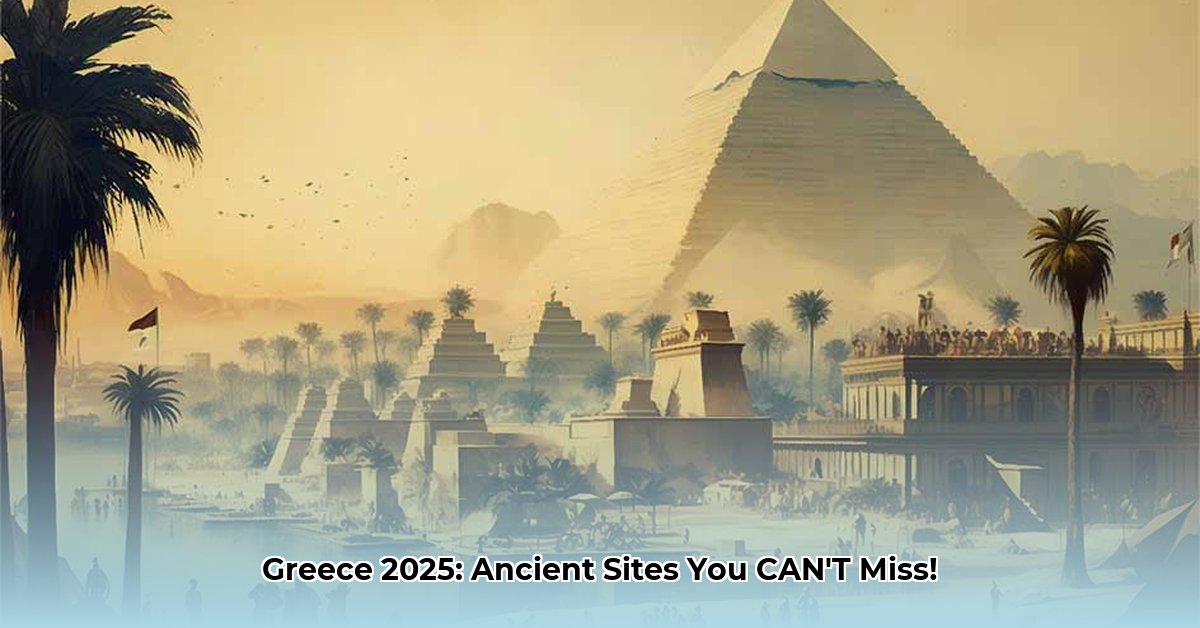
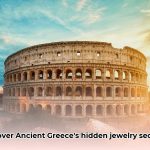
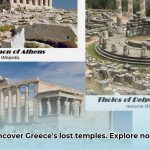
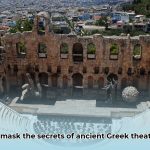
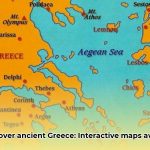
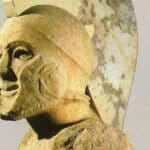
![Unveiling Ancient [black people in ancient greece]: New Civilizations Insights, Challenging History black_people_in_ancient_greece_edited](https://www.lolaapp.com/wp-content/uploads/2025/08/black_people_in_ancient_greece_edited-150x150.jpg)
